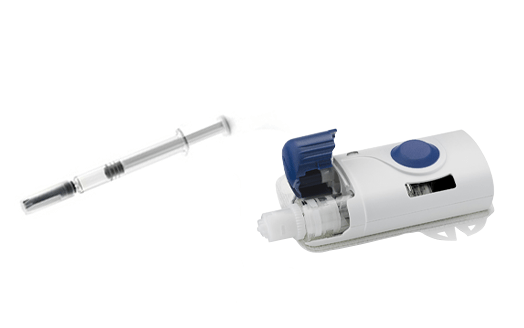Leveraging a Platform Approach for Drug-Device Combination Products
One of the increasing trends in the world of drug-device combination products is the use of platforms for drug families, delivery device technologies, and primary packaging.
![]()

What is a platform? There are several industry consortiums working to define this. For the sake of simplicity, the focus here is on device platforms and the current draft of the ASTM standard New Guide for Standard Guide for Definition of Combination Products (Drug/Device/Biologic Combinations).1 This defines a platform technology as:
a medical device, device component of a delivery system, or device technology that has been or will be developed with the intent to be used with a drug or medicinal product, and whose information (generated to justify, verify, or validate the design and development) can be used or leveraged to support the safety and/or effectiveness in combination with other active ingredients (i.e., to deliver other drugs/medicinal products), e.g., through a bracketing or matrixing approach. Each separate medicinal product/device combination is considered a separate combination product.
A few important facts about device platforms are:
- They are not a finished combination product.
- They will be defined by function, not therapy or indication.
- A single delivery technology platform can be modified/adapted to accommodate specific drug needs.
Modifications in a device platform can address variables such as the ranges of dose volumes, viscosities, and patient populations. More specifically, modifications may involve customizing for specific patient populations or the development of a “connected” delivery system to improve patient compliance.
The potential benefits of a platform strategy are:
- Leveraging data for subsequent programs
- Reduction of design and process development costs
- Simplification of supply chain
- Reduction of technical risks since the design was prior verified
An additional potential benefit is the ability to introduce a device in phase-3 trials and launch, instead of needing to make the introduction as part of lifecycle management.
Regulatory Considerations
There are a series of guidelines that provide information to support the use of platforms, although no clear guidance document is available at this point. The documents to be considered are:2
- 21st Century Cures Act, Section 3038, Combination Product Innovation3
- FDA Principles of Premarket Pathways Guidance (draft, Feb 2019)4
- FDA Bridging for Drug‐Device and Biologic‐Device Combination Products Guidance for Industry (draft, Dec. 2019)5
- FDA Type V DMFs for CDER‐Led Combination Products Using Device Constituent Parts with Electronics or Software Guidance for Industry (draft, Oct. 2019)6
- EMA Guideline on the Quality Requirements for Drug‐Device Combinations (draft, May 2019)7
- EU Medical Device Directive, Article 1178
- For Europe, notified body opinions are stand-alone documents and can be based on a platform. Currently there is no clear guidance around this, but industry consortiums and regulators are in discussions.
How It Works
Existing technology platforms would be reviewed for each new drug product to see if it is a potential fit and if some modification is necessary. It is an expectation that the reason why a specific technology platform is chosen is documented for each drug product and each ultimate combination product. Documentation is essential; over time, and with use of the platform concept, there is a risk that documentation could be forgotten. The use of one system over and over may lead to a lack of thoughtful justification.
The reasons for selection of a particular technology platform should be documented in the project’s design and development plans. The key factors to evaluate when a platform approach is used are the device itself, the drug product, and the user. For example, evaluation must be made of device properties, labeling, and the tasks to be performed in order to enable the device to function properly in the final combination product.
Identification of the relevant group of users must be made and their needs clearly understood, as they relate to the combination product's use. An example provided in the FDA Bridging for Drug‐Device and Biologic‐Device Combination Products Guidance for Industry (draft, Dec. 2019)5 is the use of an autoinjector platform. The guidance states that if the indication, dosage, and administration are the same (e.g., there is no change to the delivery of the drug insofar as dose accuracy, injection time and injection depth), then no additional clinical data may be needed. Further, other existing data may be leveraged. Human factors data may be used if the user interface, indication, and actuation force are the same. Design verification testing (DVT) data that does not relate to the drug product may be used, such as extended needle length, activation of the autoinjector, and needle shield/cap removal force. Note, however, that all gaps must be addressed and documented.
When evaluating a device or package platform approach, other benefits can be derived from the supporting base documentation. Content such as biocompatibility, risk management files, human factor engineering files, standardized test methods, and design verification files can be used to accelerate development of technical and regulatory support packages for the full combination product. Likewise, manufacturing processes can be augmented with the supporting base documentation. For example, content regarding fill/finish, assembly, and packaging can be used to accelerate use of a given combination product for multiple drug products.
Summary
Design controls throughout the entire development process, whether using a platform or not, is a must for meeting Current Good Manufacturing Procedures (CGMPs) and regulatory expectations. The importance of building a line-of-sight technical package to justify the decisions made in the development of a combination product is critical and should be considered whether leveraging a platform approach or developing a combination product from beginning to end as a stand-alone product.
Click here to watch a quick video summary of an approach to using a platform for a packaging or delivery system.











